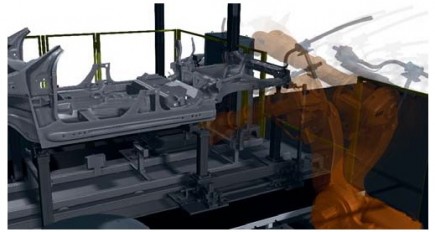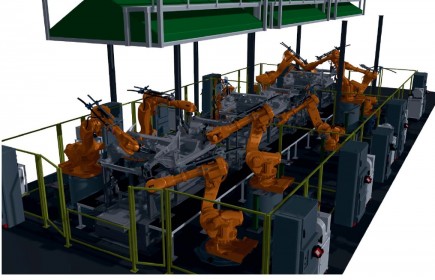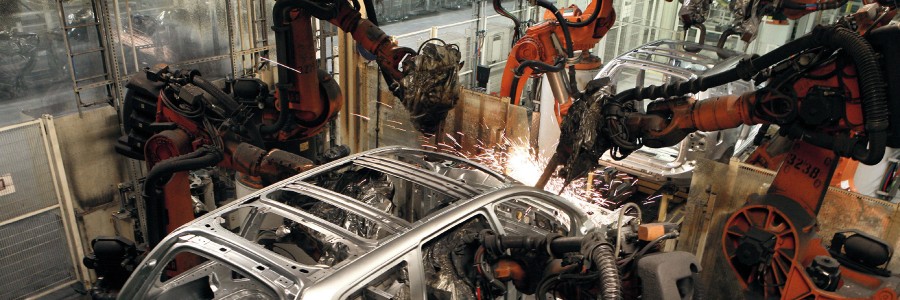In today’s automotive industry, although most development is done virtually, some decisions still lack a solid mathematical basis. In order to make the manufacturing engineering process more efficient, FCC and Wingquist Laboratory at Chalmers have worked with Volvo Cars, Volvo Trucks, Saab Automobile and Scania CV in VINNOVA funded projects to develop new methods and tools for automatic load balancing of welding lines.

This work has aimed at developing automatic simulation based methods for weld load balancing over entire production lines to maximize equipment utilization as well as dimensional quality.
The strategy to target the load balancing problem has been (i) to treat identified station design parameters together, with respect to equipment utilization and geometrical quality, based on a chronological framework for virtual sheet metal assembly design, (ii) to utilize and further develop automatic path planning combined with discrete optimization techniques in order to automatically load balance, sequence and find collision free motions, (iii) to continuously implement the results in the FCC developed IPS software available for the project partners, since this way of working has proven to guarantee the usefulness of the project results both during and after the project, and (iv) to use real industrial case studies to quantify the level of success in reaching the objectives.

Automatic simulation is now a reality through a world first method. The new method has been successfully applied in vehicle programs, will be rolled out to all vehicle programs and body shops at Volvo Cars, and is described in 5 principal scientific publications. The project has also resulted in a PhD thesis in product and production development at Chalmers.
Application of the automatic line balancing method shows
- 25% better equipment utilization, and
- 75% reduction of offline programming- and commissioning costs.
The method also enables
- Concurrent manufacturing engineering and product development,
- Increased insensitivity to late changes,
- Backup solutions for robot breakdowns
Furthermore, the project won the Volvo Cars Technology Award 2011 in the category “Research”.

